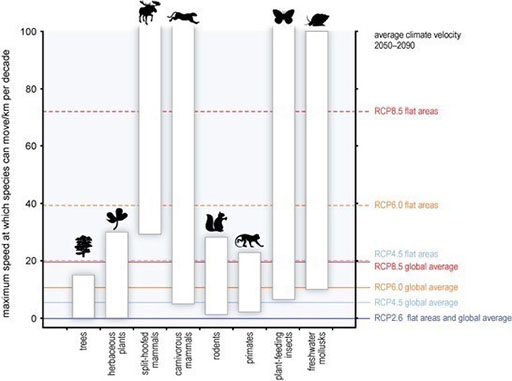4 Predictions for life: Natural systems
What impacts will future climate change and ocean acidification have on life?
You saw in Session 2 that many marine species such as fish are migrating their habitats from one region to another much faster than terrestrial species. This is because there are fewer physical barriers preventing them from adapting in this way.
Figure 9 shows the IPCC (2013) estimates of how fast different species can migrate, along with the average speeds necessary under different RCP scenarios (the ‘climate velocity’, the rate of movement of the climate across the landscape). Freshwater molluscs can migrate rapidly, with the white bar extending far above most predicted climate change. But small terrestrial species and, of course, vegetation, are much more limited. For them, migration speeds may not be sufficient to respond, i.e. to adapt, to RCP6.0 or RCP8.5 scenarios of climate change. Those that cannot adapt will see their population numbers decrease or become extinct in part or all of their ranges.

